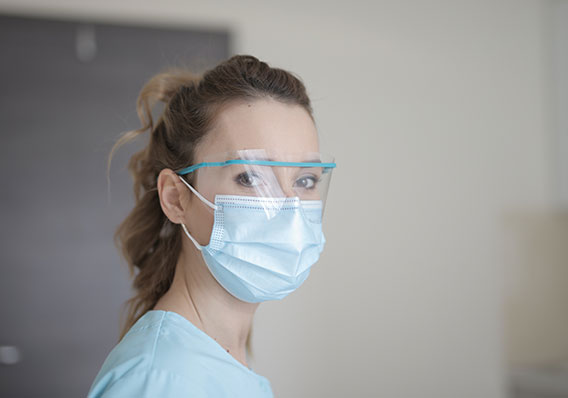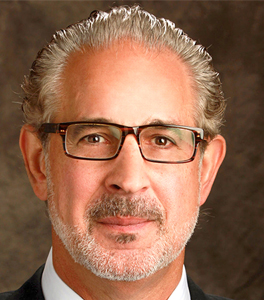Innovative Solutions for Challenges in Infection Prevention and Control
Joe Urso
8/8/2023
 Infection prevention in skilled nursing facilities is essential for the safety of residents, staff, and visitors to minimize the communal spread of healthcare-associated infections (HAIs). These facilities are home to some of our most vulnerable populations, including older adults and individuals with typically at least one chronic medical condition.
Infection prevention in skilled nursing facilities is essential for the safety of residents, staff, and visitors to minimize the communal spread of healthcare-associated infections (HAIs). These facilities are home to some of our most vulnerable populations, including older adults and individuals with typically at least one chronic medical condition.
“Common Infections in Nursing Homes: A Review of Current Issues and Challenges” states that more than 1.5 million individuals in the United States reside in 16,000 nursing homes, experiencing a yearly infection rate of 2 million. These infections are linked to elevated morbidity and mortality rates, increased rehospitalizations, prolonged hospital stays, and significant healthcare costs.
The Importance of Infection Prevention in Nursing Home Facilities
Individuals in nursing home facilities represent some of the most vulnerable populations. The elderly, frequently immunocompromised, frailer, and sicker, are particularly susceptible to airborne and surface pathogens. Furthermore, residents of nursing homes are unique in that they all reside, dine, socialize, and engage in recreational activities with one another within these facilities.
Over the past decade, this demographic has experienced a significant increase in the severity of illnesses and an increased likelihood of acquiring novel infections. Poor air quality and an increased risk of exposure to pathogens, such as viruses and bacteria, can put residents at risk for serious infection. Staff and residents of skilled nursing facilities have also been disproportionately and negatively affected by COVID-19, Methicillin-resistant Staphylococcus aureus (MRSA), and C. difficile.
To address these concerns, the Centers for Medicare & Medicaid Services (CMS) issued requirements in 2016 that nursing homes designate an individual as an infection preventionist (IP). This requirement was implemented to improve infection prevention and control in nursing homes and reduce the spread of infections among residents and staff. However, four years after implementing the qualified infection control expert requirement, infection prevention and control deficiencies were magnified during the pandemic and plastered headlines daily.
Labor Shortages Challenge Infection Prevention and Control in Nursing Homes
The labor shortage crisis in health care is also having a significant impact on infection prevention in nursing homes. Skilled nursing facilities across the board are struggling to recruit and retain qualified staff, which can lead to inadequate staffing levels and overworked staff. Overworked staff can increase the risk of infections by reducing the time available for infection prevention and control measures and increasing the likelihood of errors.
Nursing home facilities have increasingly relied on temporary workers to address staffing shortages. However, temporary workers may not have the same level of familiarity with the facility's infection prevention and control practices, leading to inconsistencies and gaps in care. This lack of continuity and consistency can contribute to increased infection rates within the facility.
And even with adequate staffing levels, staff misses many high-touch surfaces in episodic cleaning. According to a 2017 study, over half of the designated touchpoints are overlooked, and almost 40 percent of the disinfected surfaces are insufficiently treated to prevent infections.
Emerging Solutions for Infection Prevention in Nursing Homes
Various emerging technologies are becoming available to help nursing homes with infection prevention without adding more staff. These technologies can help to automate specific tasks and reduce the burden on staff, allowing them to focus on providing high-quality care to residents. One such 21st-century solution is full-facility continuous surface and air disinfection utilizing advanced photocatalysis. This technology is intended to be used in spaces occupied by residents and staff and works around the clock.
The transmission of pathogens through indoor aerosols has become an increasing concern in all healthcare facilities. These aerosols can remain suspended in the air and survive on surfaces for extended periods, heightening the risk of infection, and may not be effectively addressed by conventional infection control measures. Implementing additional high-efficacy and low-maintenance infection control solutions can help mitigate this risk, enhancing the safety of both patients and staff.
Maintaining healthy indoor air quality (IAQ) is crucial as it can mitigate the risks of threats posed by viruses such as SARS-CoV-2, fungi, bacteria, and other pollutants. These hazards can severely impact the well-being, health, and functioning of individuals occupying various structures, including nursing homes and skilled nursing facilities.
Potential Financial Advantages of Implementing Advanced Infection Prevention Technologies
By adopting full-facility continuous surface and air disinfection technology, skilled nursing facilities could experience several financial advantages such as:
1. Avoid incurring CMS penalties associated with infection control practices related to HAIs.
2. Lower expenses linked to managing HAIs, including expenditures on disposable items, antibiotics, and staffing requirements.
3. Decrease in staff absenteeism due to illness.
4. Achieve higher patient retention rates by earning favorable ratings for providing top-quality care.
5. Increase occupancy by reducing patient isolation due to illness.
There is a vast array of IAQ infection prevention technologies available. However, it’s important to find a technology that is proven and tested adequately. Additionally, these technologies should not replace other infection control practices, such as hand hygiene, personal protective equipment (PPE), and environmental cleaning. Instead, they should be combined with these practices to create a comprehensive infection control program.
 Effective prevention and control of infections in nursing homes is an ongoing challenge that requires a collaborative effort from all involved parties. It is important to recognize the responsibility that comes with caring for the most vulnerable members of society and to prioritize their safety through the implementation of evidence-based infection prevention and control measures. With the continued adoption of new technologies and strategies, we can potentially make significant strides in reducing the incidence of infections in nursing homes, improving the overall health and well-being of our elderly population and contributing to the success of long-term care facilities.
Effective prevention and control of infections in nursing homes is an ongoing challenge that requires a collaborative effort from all involved parties. It is important to recognize the responsibility that comes with caring for the most vulnerable members of society and to prioritize their safety through the implementation of evidence-based infection prevention and control measures. With the continued adoption of new technologies and strategies, we can potentially make significant strides in reducing the incidence of infections in nursing homes, improving the overall health and well-being of our elderly population and contributing to the success of long-term care facilities.
Joseph Urso is the founder, chairman, and CEO of ActivePure Technologies. Urso is the winner of the 2022 Entrepreneur of the Year for Ernst & Young’s Central Plains Region, as well as a national finalist. Urso received his B.A. from Marietta College, his J.D. from Stetson College of Law, and his LLM from New York University School of Law.